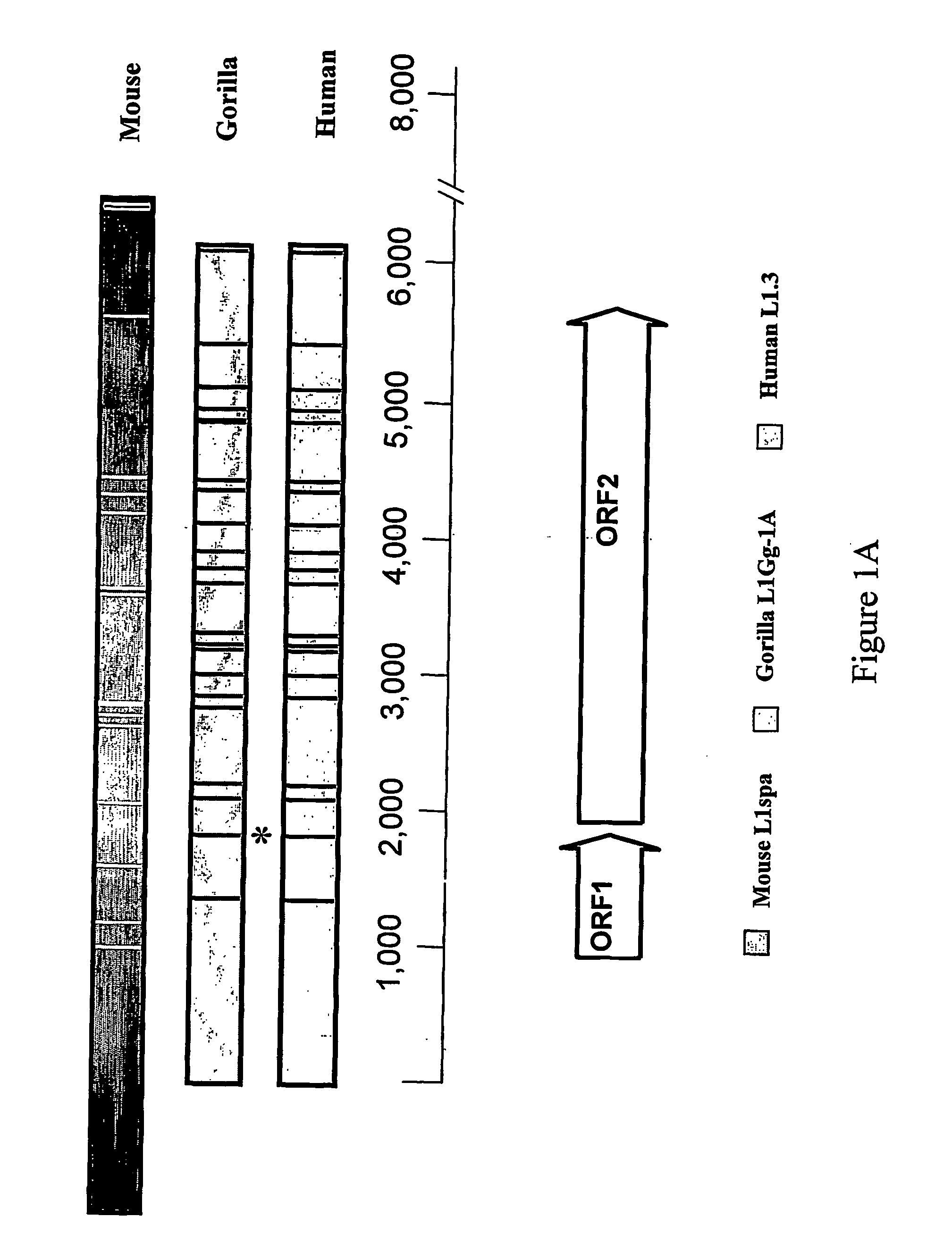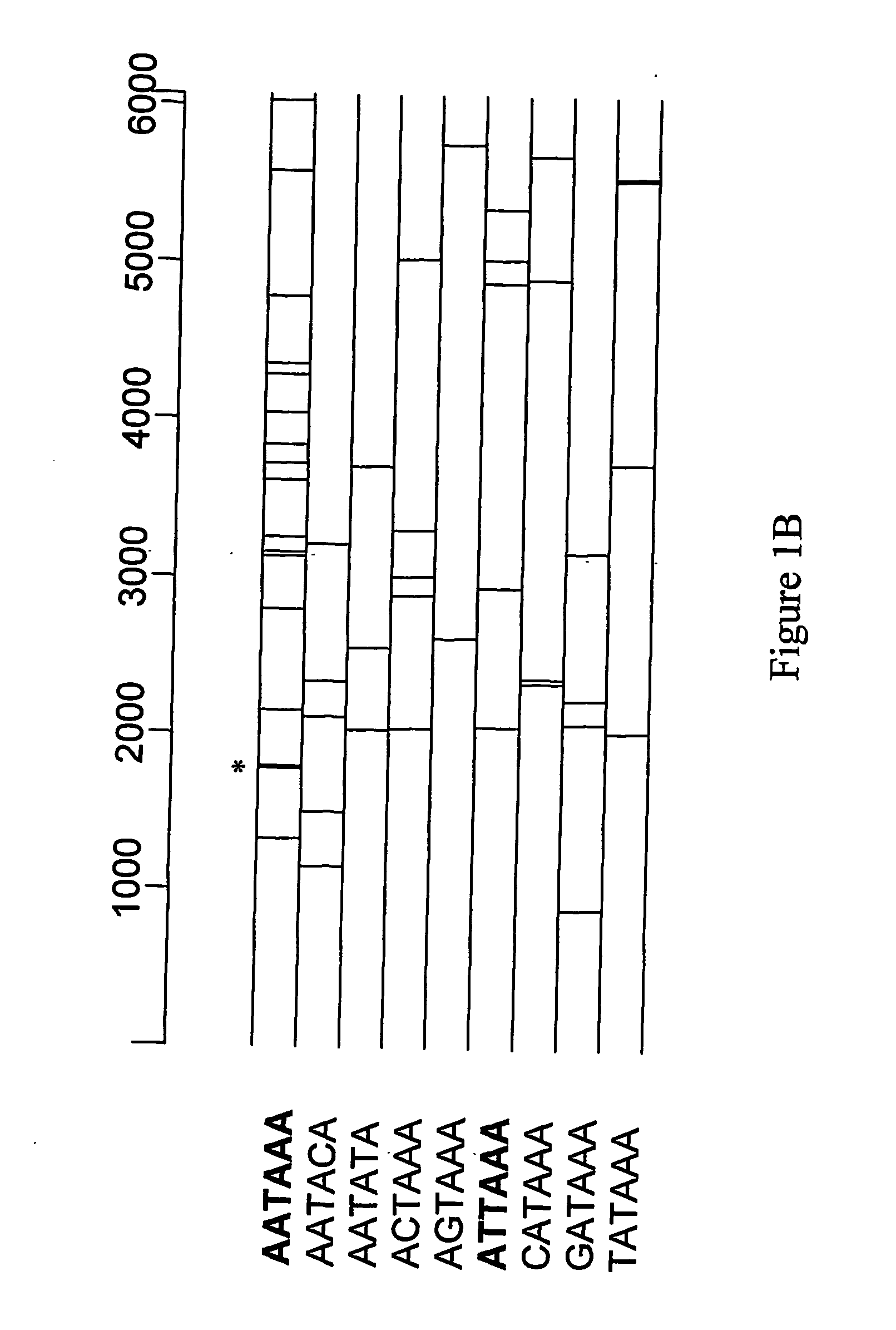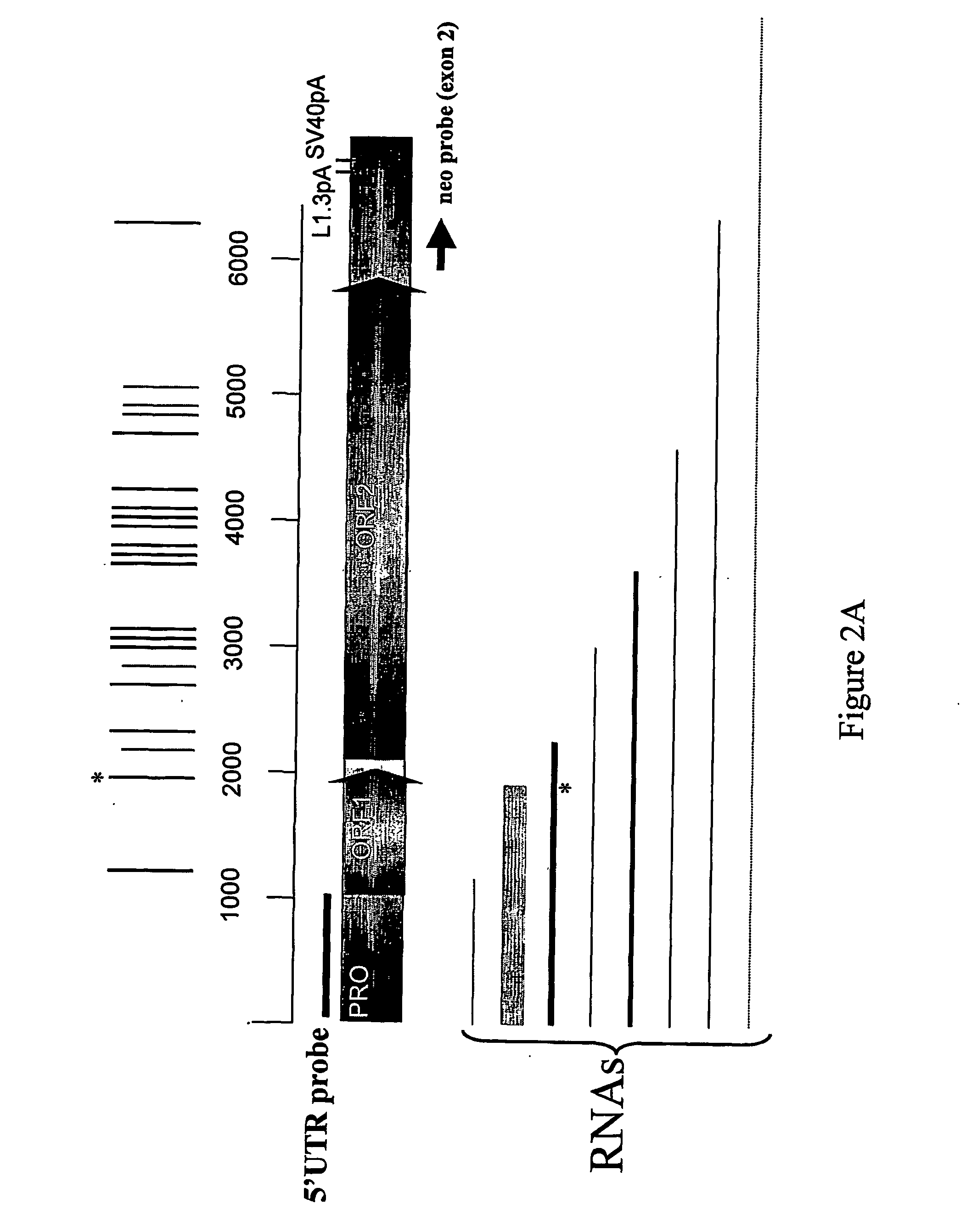Mammalian retrotransposable elements
a retrotransposable element and mammalian technology, applied in the field of molecular biology, can solve the problems of low efficiency of retrotransposon, lack of optimal means of gene transfer, and little full-length rna production in cultured cells, and achieve the elimination of putative polyadenylation sites, high retrotransposal efficiency, and the effect of increasing the gene expression of the elemen
- Summary
- Abstract
- Description
- Claims
- Application Information
AI Technical Summary
Benefits of technology
Problems solved by technology
Method used
Image
Examples
examples
[0018] These examples are presented for purposes of illustration only and are not intended to limit the scope of the invention in any way. Techniques common to the field of molecular biology were used.
Identification of PolyA Sites
[0019] The L1 genome has a large number of potential hexanucleotide, poly(A) signals (FIG. 1A) in its sense strand, yet very few in the antisense direction. This is the opposite pattern seen in most cellular genes, as selection apparently limits the number of potential poly(A)sites that could cause premature termination of transcription. A functional polyadenylation signal required for transcriptional termination by polymerase II (PolII) consists of three sequence elements that determine the exact site of the cleavage and polyadenylation. The most conserved of the three is the AATAAA hexanucleotide. Examples of other hexanucleotide polyadenylation signals include AATACA, AATATA, ACTAAA, AGTAAA, ATTAAA, CATAAA, GATAAA, TATAAA. The actual cleavage / polyaden...
PUM
 Login to View More
Login to View More Abstract
Description
Claims
Application Information
 Login to View More
Login to View More - R&D
- Intellectual Property
- Life Sciences
- Materials
- Tech Scout
- Unparalleled Data Quality
- Higher Quality Content
- 60% Fewer Hallucinations
Browse by: Latest US Patents, China's latest patents, Technical Efficacy Thesaurus, Application Domain, Technology Topic, Popular Technical Reports.
© 2025 PatSnap. All rights reserved.Legal|Privacy policy|Modern Slavery Act Transparency Statement|Sitemap|About US| Contact US: help@patsnap.com



